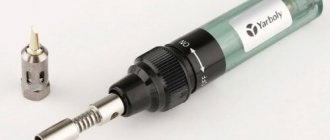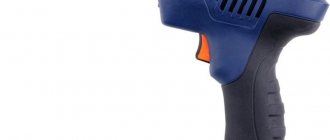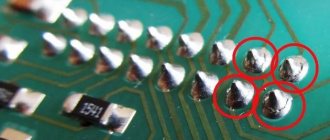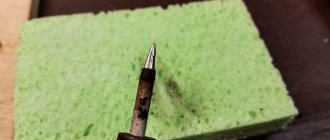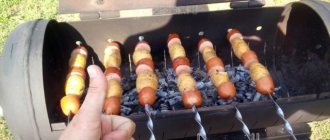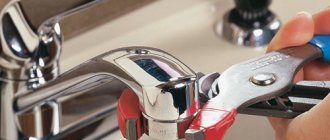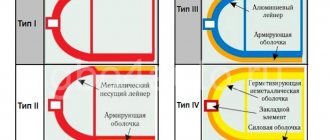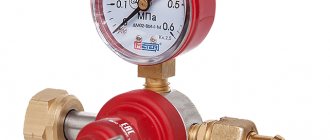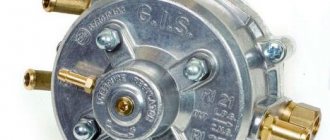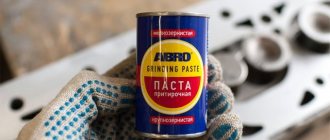A gas soldering iron is a device used for soldering. That is, for joining metals with a binder whose melting point is lower than that of the elements being joined. One of the most popular types of soldering irons are gas soldering irons. Although in many ways they are more convenient to use than others, they are not suitable for all types of work.
There are many types of soldering irons on the market, but this one is the best in many ways.
What it is?
A person who has at least once seen the operation of a gas welding machine can well imagine the design of a gas soldering iron . This tool consists of three parts:
- Gas filling tank;
- Flame adjustment button;
- Connector.
In fact, the design is a little more complicated, but if you do not plan to change the nozzle or air intake, and this is not worth doing, then you will not have to disassemble the soldering iron. The main advantage is the ability to use stings of different shapes and purposes. You can replace the working tip within a few seconds if it has cooled to an acceptable temperature.
The principle of operation of a gas soldering iron
Unlike gas welding, when soldering with a gas soldering iron, an open flame is rarely used. The design of the soldering iron provides a special catalyst, which looks like a ceramic mesh coated with platinum. Thanks to the catalyst, the soldering iron flame does not burst out, but burns evenly on the surface of the ceramic grill and heats the tip. Ceramics is a fairly fragile material, so it is not advisable to drop the soldering iron. Many craftsmen make a catalyst for a gas soldering iron from a nichrome thread, which is quite capable of replacing the original.
So, let's take a closer look at how a gas soldering iron works:
- The tank is filled with gas , which is usually used to refill kitchen or ordinary lighters. Refilling a gas soldering iron takes 15-30 seconds, and the operating time of the tool will depend on the selected power;
- Fuel is supplied to the nozzle through a valve that controls the gas supply intensity, that is, the operating temperature;
- The gas is ignited using a piezoelectric element or flint, or simply from a match - it all depends on the model;
- Using the regulator button, the required flame length is set , that is, the temperature required for soldering.
You can bring the soldering iron into a state of “combat readiness” in half a minute, which is an undoubted advantage of the tool. In any case, before using a gas soldering iron, you should carefully study the instructions. Note “before” and not after half the apartment was almost burned down.
Soldering with an electric soldering iron
Today, the market offers a huge range of different electric soldering irons, and the difference in prices and capabilities of the latter is simply enormous. The cheapest soldering iron costs less than a hundred rubles, the most expensive – several tens of thousands (soldering stations). You shouldn’t buy cheap soldering irons, as they don’t last long (literally a few months), overheat greatly and quickly begin to “break through”, that is, voltage from the heating element begins to flow to the metal part of the soldering iron. Under some conditions, all these shortcomings can be circumvented, but it is much easier to buy a soldering iron, albeit not a branded one, but of a fairly high quality for 300 - 400 wooden rubles.
Let's strip the ends of the two wires.
The most painful place of inexpensive soldering irons is the tip: most inexpensive soldering irons have samples that are completely unsuitable for fine work, so when buying a soldering iron you must definitely buy a good tip for it. How good depends on finances. If you have money, you can buy an expensive silver-plated tip, which will last a very long time; if you don’t have much money, it’s better to buy a regular copper one. When purchasing, be sure to check whether the tip has the right diameter.
Before you start soldering, a new soldering iron must be prepared for this. There are different options here, so first you need to decide which tip is more convenient for you to solder: curved or straight. If you are holding a soldering iron in your hands for the first time, it is better to solder directly. Next, you need to sharpen the soldering iron tip. It can also be sharpened in different ways. Here you will have to experiment yourself, look for the option that is convenient for you. Usually, the tip of the sting is sharpened obliquely.
Use of gas soldering irons
The multi-faceted personality of the tool allows it to be used for various purposes:
- Heating of rusted parts, heat-shrinkable pipes, etc.;
- Cutting plastic – the best gas soldering irons are capable of not only cutting, but also fusing and welding plastic parts;
- Cleaning of old paints and varnishes;
- Soldering with a gas soldering iron (with an open flame, where the temperature rises above 1000 °C) allows you to solder using high-temperature hard solders;
- Repair various equipment, including automotive electronics, while standing on the side of the road;
- A mini gas soldering iron, also known as a “pencil”, allows you to spot solder microcircuits and circuit boards even in conditions of complete absence of electricity;
- The tool has gained wide popularity among installers and electricians working on sites under construction or without power.
Features of workplace and tool preparation
3 main secrets: posture, light and air
Even at home, to perform high-quality soldering, a comfortable worker position with good lighting is required. I recommend installing a desktop near a window that receives sunlight during the day and an artificial source of light in the evening.
Soldering involves heating substances and releasing fumes. Although heated rosin smells like pine needles, this smell is still harmful if inhaled frequently. And other fluxes and acids are even more dangerous. Entering the body through the respiratory system, they accumulate and cause chronic diseases.
Therefore, ventilation is important. Work with an open window, or even better, use forced exhaust.
Useful devices
A short tin with a paper lining is necessary for working with solder and rosin.
A special stand helps to store a heated soldering iron, and a sponge allows you to clean the hot tip from oxides.
It is convenient to remove excess melted solder with a desoldering pump.
Working with small objects is made easier by tweezers, small vices, and “third hand” devices. The simplest option: regular pliers with an elastic band.
You can make other simple designs with your own hands.
Selecting and preparing a soldering iron
The sale offers various models with voltage from 12 to 220 or 380 volts. Each soldering iron is created for a specific job, although it has universal capabilities.
They are assessed by the power consumption of electrical energy, which is spent on heating the tip of the tip.
It is convenient to solder radio components with a soldering iron with a power of 40÷60 watts, and for wires choose 80÷100.
For beginner soldering ironers, it is enough to use simple models of two soldering iron designs with:
- heating from nichrome wire and a copper rod;
- ceramic insert and copper tip with nickel coating.
The first type of soldering iron is cheaper, but it requires constant care of the tip, takes longer to heat up to the desired temperature, and wears out faster.
A soldering iron with a ceramic insert works better, but is more expensive. In addition, ceramics require careful handling. It can break due to mechanical shock.
Personal preferences
I have been using transformer soldering irons of the “Moment” type for more than 30 years.
Some people don't like it because of the extra weight. But for me this indicator is not critical. The industrial wattage of 65 is good for amateur radio soldering, but it is not enough for connecting electrical wires.
Therefore, I assembled a more powerful structure with my own hands.
This technology is described in a separate article on the website.
About counterfeit brands
For a long time I could not understand why I like transformer soldering irons, but they are massively criticized on the Internet. Even in the above article, readers expressed a negative opinion about them, criticizing their fragility and poor quality.
I realized this only after a visitor to my site sent me a burnt-out soldering iron from the Chinese company Licota for experiments.
It looks very nice, is light in weight, fits comfortably in the hand and is originally packaged. Upon closer examination of it, I discovered many installation and design defects. I wrote them down in separate articles:
- About the shortage of magnetic circuit iron plates;
- Violations of the technology for winding insulated wire on a reel and the need to modify its internal surfaces;
- Detecting a design defect in the power winding;
- Replacement of power winding;
- Comparison of the electrical characteristics of two soldering irons: old Soviet and modern from China.
When buying cheap soldering irons from dubious sellers, you can end up with low-quality products, lose money and time. Please pay attention to electrical performance and warranties.
There are other different types of soldering irons designed to get professional work done well. But it’s better to start learning soldering using the models described above.
About sharpening the tip
Cleanliness is not only a guarantee of our health, but also a guarantee of high-quality soldering. It must be observed during work.
The copper tip of the soldering iron heats up to such a state that oxides and carbon deposits form on it. When they penetrate the solder, you can forget about the quality of the soldering. Therefore, the tip of the tip should always be clean and well sharpened.
Its shape is created for a specific type of parts to be soldered:
- The “flat head screwdriver” transfers heat well. It is used to heat massive parts;
- A “pyramid” or “sharp cone” makes it more convenient to control the amount of heating. It is used to connect small radio elements or thin wires;
- The “blunted cone” is sharpened for soldering medium-section wires.
The first type of sharpening is more popular. It can be formed by hammer blows. Then the metal is better compacted and retains its properties longer.
By placing this tip on the part to be soldered with a plane or an acute angle, you can regulate the degree of its heating.
Modern ceramic soldering irons have a set of removable tips of the most necessary shapes. They are coated with a layer of nickel on top and do not require sharpening or preparatory treatment.
How to tin a copper tip
The tip of a new soldering iron without a protective nickel coating must be coated with a thin layer of solder, which will protect it from carbon deposits and premature wear. For this:
- the soldering iron is turned on under voltage, heating the tip to working condition;
- immerse it in a piece of rosin;
- melt the solder, distributing it over the surface of the tip tip. It is convenient to use a wooden object.
Comparative characteristics of electric and gas soldering irons
Mobility and convenience:
- Electric – tied to the network , limited by the length of the cord;
- Gas – full mobility ; can be used in hard-to-reach places; does not require electricity; Having a gas cylinder on hand makes it easy to refill at any time.
- Electric – the average tip heating time is 3-5 minutes ;
- Gas – ready for use in 10-30 seconds ;
- Electric - only expensive models ;
- Gas - any model has the ability to adjust the flame and several modes: using a replaceable tip, you can solder with a gas soldering iron using a thin stream of heated air, burner.
- Electric - virtually all models have an operating temperature of 450°C ;
- Gas - depending on the tasks, the temperature can be adjusted from 500 to 2000 °C .
Read also: What is the best glue to glue plastic to plastic
The main thing is to choose correctly
A master planning to purchase a new tool for himself will try to find out which gas spigot is better . There is no clear answer to this question. First you need to decide for what purpose you are going to purchase this unit, and then find a store where you can buy a gas soldering iron at an affordable price and of appropriate quality. Well, let's say you've already found a place - our store has goods from the best manufacturers. There are still goals.
Hobby or home use - inexpensive models are suitable as a tool, but preferably not made in China. An average tool can easily cope with everyday tasks: soldering a part, connecting wires, soldering or cutting plastic, even starting a fire from wet wood. By the way, for lovers of hiking and relaxing in the lap of Mother Nature, we offer gas soldering irons and burners that will save you from the unnecessary hassle of cooking or heating food.
Professional soldering - this requires a tool with the ability to fine-tune and a wide range of tasks performed. An excellent choice would be the Dayrex gas soldering iron, which is suitable for working with hard and soft solders, heats up parts perfectly, and easily cuts plastic. It is better to refill a professional gas soldering iron (the instructions are often silent about such nuances) with proven, well-purified butane. Using cheap gas for a gas soldering iron, you risk quickly ruining the catalyst - it will simply become clogged with solid impurities. However, if such a problem does happen, then there is no need to panic - just take out the catalyst and clean it.
By trusting a professional gas tool, you get the opportunity to quickly get to work and carry it out at the highest level. And we, in turn, are always happy to provide you with gas soldering irons from trusted manufacturers and at affordable prices.
How to solder correctly with a soldering iron.
Take the twig with pliers and coat it with flux. Either cover it with acid with a brush, or melt rosin and apply it to the vein.
2. Next, take a little solder onto the soldering iron tip to form a droplet. It shouldn't drip. And then move the sting along the twig, turning it a little, so that the entire wire is covered with a thin layer of tin without gaps.
Wait until it cools down and repeat the operation with all the remaining ones. The photo shows stains left due to the use of acid. Additional wiping will be required if a reactive flux is used.
3. Now the most difficult part, you need to connect the twigs into corners, then into 2 squares.
4. Place one square on a metal plane (so as not to spoil the table) and attach 4 ribs.
5. Solder the second square on top. Mission Complete.
To check the quality of the work, take your creation and squeeze it in your hands. If it's dented, but not a single rib has fallen off, congratulations. It is advised to repeat until victory, but try to do it at least 2-3 times.
There should be no solder drops in the corners.
You yourself will notice how the tinned wires will have a perfectly even, shiny layer and the joints of the parts will become stronger. And when you get used to holding parts straight, you can do anything.
Dremel VersaTip Gas Soldering Iron
For the New Year I bought myself this gas soldering iron from Dremel:
The point of a gas soldering iron is that it can work far from an outlet: solder something in a car, on a boat, a model airplane, or an antenna on the roof. Using a hot air nozzle is convenient for shrinking heat shrink (which in some cases is much more aesthetically pleasing than blue electrical tape). They can also be used to warm castles in winter and light a fire using a gas burner.
I took Dremel because I use their Dremel 300 and am pleased with the quality and reliability, plus the cost is quite adequate (I bought it on Ozon.Ru for 1,485 rubles, in OBI it cost 1,999 rubles).
At the end of the note I will collect links to reviews of other gas soldering irons.
Package
A cellulose sponge in a tin is needed to wipe the solder off the tip. Before use, you need to wet it with water and squeeze it a little - it will swell. No need to wipe the soldering iron on a dry sponge!
An empty tin can is needed to store the cooling attachments. You can remove hot attachments using wrenches.
Reducing the minimum power for comfortable soldering
Initially, the soldering nozzle heats at a minimum of 450-500 degrees, which immediately oxidizes the solder. Soldering semiconductors and microcircuits at this temperature is not recommended.
To adjust, you need to remove the blue pin on the power regulator. Under the eyelet there will be a slot for a screwdriver. If you turn the spline, you can change the position of the adjusting ring relative to the valve.
Reduce gas supply to minimum:
- Set the regulator to minimum.
- Unscrew the slot.
- Turn the regulator to maximum.
- We tighten the slot.
- Carefully turn the regulator towards the minimum until it stops turning - the valve is closed. Turn the regulator a couple of millimeters towards the maximum.
- Unscrew the slot.
- Turn the ring to the minimum position.
- We tighten the slot.
The advantages of this setup:
- The sting does not burn as quickly. At 450-500 degrees the tip will burn very quickly.
- When soldering, the solder does not oxidize.
- Gas consumption is reduced.
- The soldering iron is less noisy.
- There is no brutal stream of hot air blowing from the nozzle on the nozzle, desoldering everything around.
- When the power regulator is in the minimum position in burner mode, the flame does not burn. In my opinion, this is not a problem.
Read also: Wood saw blades for circular saws
IGNITION
Move the gas supply lever to the middle position. Move the switch up and to the right to the “ON” position. Press the ignition button and the soldering iron will operate in “open fire” mode. 3 seconds after ignition, move the closing lever to the extreme left position and release it, and then the “open fire” mode will be turned off and the soldering iron tip will begin to heat up.
Refueling
I didn’t want to buy cheap Chinese gas for lighters.
For now I use Kovea gas for gas burners:
The composition is 70% butane + 30% propane, and the Dremel VersaTip is designed for 100% butane. That is, it is not entirely correct to use such gas (but it is definitely better than cheap gas, which will quickly clog the nozzle and cause the soldering iron to fail).
The need to solder parts may arise when repairing radio equipment, household appliances, electronics, jewelry and various car components. A common tool associated with this type of work is an electric soldering iron. Not everyone knows about other varieties of this device, but modern models of gas soldering irons have a number of advantages over their electric counterparts. What is special about gas soldering irons, why they are good, how to choose them - read in our material, and at the same time pay attention to our independent TOP 5 best gas soldering irons for a variety of cases and for a variety of budgets.
Pros and cons of gas soldering irons
This device has positive and negative sides. To make the final choice, you need to first get to know them in more detail. A gas soldering iron has the following advantages:
- quick warm-up, no more than 30 seconds;
- work autonomy;
- high soldering efficiency;
- compactness and light weight of the product;
- a gas soldering iron with piezo ignition can be used without a fire source;
- possibility of heating up to a temperature of +2000°C;
- easy flame adjustment;
- affordable price.
Among the disadvantages of a gas soldering iron are:
- problems in finding spare parts;
- inconvenient way to refuel;
- leaky fuel channel;
- noisy operation;
- possible problems with ignition (the device does not turn on, the flame is very small and goes out).
Gas soldering iron: buyer's guide
What is a gas soldering iron?
A gas soldering iron is a universal compact device that is convenient to use when there is no connection to an electrical outlet, as well as when it is necessary to solder parts made of various materials. It is used for soldering radio components, heating pipes and threaded connections, soldering large elements using refractory solder, softening old paint and varnish coatings and other types of work.
To understand the principle of operation of the device, it is necessary to consider the features of its design. All models of gas soldering irons consist of the following elements:
- containers for filling with liquefied gas;
- gas burner with built-in ceramic grate;
- working nozzle.
When the device operates, the gas gradually leaves the tank and mixes with oxygen in the air. Ignition is carried out due to a piezoelectric element or an external fire source. The flame intensity is changed using a special button, which allows you to adjust the operating temperature. A ceramic grid coated with a layer of platinum serves as a catalyst, thanks to which the flame burns evenly and quickly heats the soldering iron tip.
The main advantages of gas soldering irons
The main distinguishing feature of gas soldering irons is the ability to operate autonomously. With the help of such devices, you can solder parts of various sizes in any conditions, and not just at your desk. Gas soldering irons can be used in hard-to-reach places, while the working area of electrical devices is limited by the length of the cord and depends on the location of the outlet.
Most models of gas soldering irons are equipped with a special lock that protects the device from spontaneous activation. Within 15-30 seconds they heat up to 450-2000°C and can operate in several modes:
- soldering with a heated tip using a connecting substance;
- burner - heat treatment of the surface of parts using an open flame;
- air soldering, carried out using a narrowly directed gas flow.
In order to start working with an electrical device, you will need to wait 5-7 minutes, while the ability to adjust the heating is provided only in expensive models. The operating temperature of such devices is 450°C.
What to look for when choosing the best gas soldering iron?
Since the range of gas soldering irons on sale is quite wide, choosing the best tool for a certain type of work is quite difficult. In order for the soldering iron to meet your expectations during operation, you should pay attention to the following characteristics when purchasing:
- Maximum temperature. The scope of its application depends on the temperature range of the soldering iron. The higher the heating temperature, the wider it is. Models that heat up to 1000-1500°C are suitable for home use. It is better for professionals to purchase a device with a maximum temperature of 2000°C.
- Availability of flame level regulator. This function provides the ability to select the desired temperature and combustion intensity for soldering parts made of various materials.
- Flame type. If the work requires significant heating of the surface, it is advisable to use a tool with a vortex flame flow. The pencil flame is suitable for applications where concentrated heat is required, while the jumbo, characterized by its sharp flame, is intended for heat-intensive and rough work. The multi-purpose flame is used where very high temperatures are not required.
- Volume of the fuel container. This characteristic determines the service life of the tool. The smaller the tank volume, the more often it will have to be refilled.
- Ignition type. Models equipped with a piezo ignition mechanism are more convenient than those that are started using fire sources. If you find yourself in the field without matches or a lighter, it will be impossible to use the latter.
Read also: Tensioning a chain on a chainsaw video
Basic aspects of choosing gas soldering irons
Manufacturers, taking into account the interest in this equipment from buyers, are constantly expanding the range of products they offer. They improve previously released models, equipping them with new attachments and additional functions. With such a variety of options offered, it’s easy to get confused. And for the job you need to choose the best gas soldering irons.
So, in order for the selected model to fully meet all the buyer’s expectations during operation, it is recommended to pay attention to the following aspects before purchasing:
- Temperature regime. For professionals, models that heat up to temperatures of several thousand degrees are suitable. For hobbyists, a device that can withstand temperatures of a thousand degrees is enough.
- Gas tank volume. The uptime of the equipment directly depends on this parameter. Please note that the smaller the tank in volume, the more often you will have to refill the soldering iron.
- Flame power control function. This option allows you to set the flame power depending on the type of material being processed.
- Ignition method. The most convenient to use models are those equipped with piezo ignition.
- Type of flame. If the job does not require high temperatures, a multi-purpose flame is suitable. For point concentration of thermal energy, the “pencil” type of flame should be used. The swirl flame device is suitable for applications where significant surface heating is required. The torch is designed for rough work.
TOP 5 best gas soldering irons
The best gas soldering iron for professionals
Dremel Versatip F0132000JC
Dremel Versatip F0132000JC priced at about 3,500 rubles. The soldering iron of this model is equipped with 6 nozzles and is suitable for operations such as melting, sealing, burning, removing heat shrink and hot cutting. Thanks to its high heating speed and fast recharging, the device is always ready for use. Additional features include a child lock, piezo ignition and a pencil flame level regulator. The set includes a hard case for storing the tool. The disadvantages are the rapid burnout of the catalyst, low inertia of the tip.
The best stationary gas soldering iron
Dremel Versaflame F0132200JC
Dremel Versaflame F0132200JC is the best multifunctional stationary soldering iron model. It costs about 3,500 rubles and is suitable for use both in workshops and at home. The instrument reservoir is filled with liquefied butane. The device comes with a removable foot. At maximum load, the soldering iron can work continuously for 70-75 minutes. It is equipped with a mechanism for blocking the flame, a flame level regulator and a piezoelectric element. The disadvantage of the model is the inability to work at low temperatures.
The best budget gas soldering irons
TDM-Electric Diamond SQ1025-0102
TDM-Electric Almaz SQ1025-0102 is an inexpensive soldering iron costing about 1000 rubles, the advantages of which include: the presence of three types of stainless steel tips (hair dryer, cutter and tip), fast heating, wide operating temperature range (450-1300°C), non-slip surface texture of the case. The packaging contains useful information about safe working practices. The disadvantages include starting using external fire sources and the inability to regulate the flame level.
A-HOT AH-063
A-HOT AH-063 is the best budget soldering iron with a piezo ignition function for spot work with materials such as wood, plastic or metal. The device costs about 1300 rubles. On the body of the instrument there is a button for fixing a thin pencil flame and a regulator of its intensity. The fuel used to operate the soldering iron is butane gas. Maximum heating temperature is 1200°C, tip length is 15 mm. The disadvantage of the device is the lack of additional attachments.
The best gas soldering iron with a set of attachments
DAYREX 626553
DAYREX 626553 is a convenient tool priced at about 3,800 rubles, with which you can carry out auto repair and jewelry work, welding, soldering, hot cutting and heat shrinking. A charged soldering iron can work for 1-1.5 hours. The device is launched using a piezoelectric element. Flame type: pencil. In addition to a set of nozzles, the kit includes a gas cylinder, a wrench, solder, a stand, and a sponge for cleaning the nozzles. The disadvantage of the model is frequent overheating of the tip.
Tool selection
A soldering iron is a tool with a heating element used to join fusible materials. According to the method of heating they are divided into:
- electrical;
- hot air;
- gas;
- induction
Soldering irons: 1-Electric, 2-Hot air, 3-Gas, 4-Induction
Electric soldering irons are used to work with electrical circuits and SMD boards . On average, they have a power of 15-40 watts. Using devices with a power of more than 100 W, large parts are soldered: radiators, copper tubes of different diameters, etc. Large hammer soldering irons with a power of up to 550 W are used in various industries: mechanical engineering, metallurgy, etc.
The choice of a particular tool is influenced not only by the size of the parts, but also by the thermal conductivity of the material from which it is made. It is this that determines the heating temperature, and, consequently, the required power. For example, copper may require a higher heating temperature than a similarly sized steel part. It is worth noting that when soldering copper parts, a situation may even arise where high thermal conductivity leads to unsoldering of connections made earlier.
The main element of the device (I remind you that we work mainly electrically) is the heating rod. It consists of a copper tube and a nichrome spiral wound on it. On one side of the rod, hidden in the handle of the device, current flows, and on the other, a tip made of a knurled copper rod is inserted. The tip of the sting is sharpened to a bevel. The tip is heated by closing the current on the nichrome spiral.
For electrical work, a lightweight, compact size tool with low heat capacity is suitable. To avoid voltage dissipation, it is better to choose a model that has a three-way ground plug. For a novice electrical engineer, a model up to 30 W will be sufficient. If you plan to repair a car using a soldering iron, then it is better to use 40-watt devices - for quickly connecting wires of any type over a large area. For comfortable operation of soldering irons in cars, special attachments are sold.
Many electronics repairmen use a soldering station. This design includes a set of all the tools necessary for soldering work: a soldering iron with replaceable tips, a stand, a voltage control unit, a hot air gun, cleaners and a desoldering pump.
Many people are interested in the question of whether it is possible to solder without a soldering iron. Yes, you can, in this case the solder and parts will have to be heated for tinning and soldering over an open fire. This allows you to create more or less high-quality connections, but the technology is less secure. In addition, a beginner who does not have sufficient experience may have great difficulties when working with materials such as copper, aluminum or stainless steel.
Comparison table of the best gas soldering irons
Name
Main characteristics
Price
Dremel Versatip F0132000JC
Equipped with 6 nozzles, a child lock, piezo ignition and a pencil flame level regulator.
Dremel Versaflame F0132200JC
The device comes with a removable leg, a mechanism for blocking the flame, a flame level regulator and a piezoelectric element.
TDM-Electric Diamond SQ1025-0102
The presence of 3 types of stainless steel tips (hair dryer, cutter and sting), fast heating, wide range of operating temperatures (450-1300°C), non-slip texture of the body surface.
A-HOT AH-063
There is a piezo ignition function for spot work, a button for fixing a thin pencil flame and a regulator of its intensity.
DAYREX 626553
The device is started using a piezoelectric element, the flame type is pencil, there is a gas cylinder, a wrench, solder, a stand, and a sponge for cleaning the nozzles.
FAQ
Are gas soldering irons explosive? Gas soldering irons are not explosive devices, but safety precautions must be observed when working with them. Do not point the burner flame at flammable objects. If there is a gas leak from the device, the room must be well ventilated.
What gas can be used to refill a gas soldering iron? Before refilling a gas soldering iron, you must study the manufacturer’s operating instructions, which indicate the gas used to operate the device (propane or butane). In most cases, cylinders for refilling conventional lighters are suitable for this purpose.
Gas soldering iron and safety precautions during operation
There is an opinion that gas tools are explosive. This statement can be refuted provided that safety precautions are followed during work. One of the requirements: the burner flame must not be directed towards flammable materials and objects that can quickly ignite. If there is a gas leak, you must thoroughly ventilate the room where the work was carried out.
Carefully studying the instructions that come with the device will help you work safely with gas equipment and extend the service life of the soldering iron. It must indicate the type of gas that this device uses (butane or propane). In many cases, soldering irons are refilled using regular refill cans for household lighters.
A gas soldering iron is a universal compact device used to create permanent connections of various parts. The device is used in places where it is not possible to connect to the electrical network. Radio amateurs also resort to his help; we solder radio elements from boards. When carrying out plumbing and paint work, a gas apparatus is a reliable assistant. The device heats pipes and threaded connections, solders large structural elements using refractory solders, and softens paint coatings that need to be replaced.
